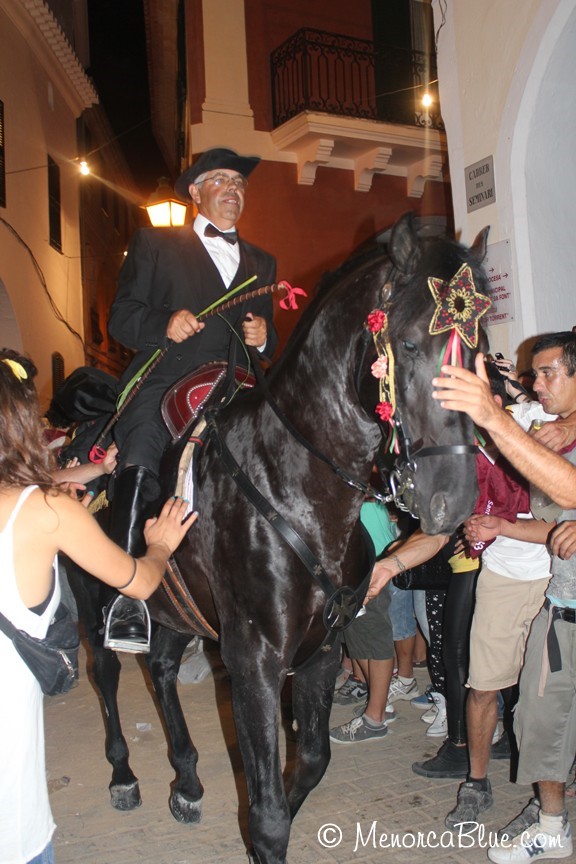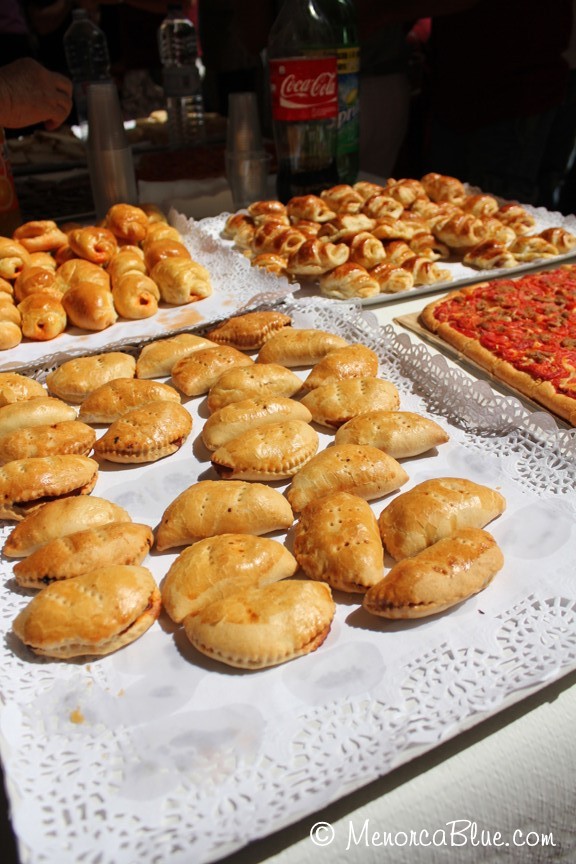The town fiestas in Menorca over the summer all revolve around the Menorcan tradition of dressage featuring the purebred Menorcan horses which are the strongest unique symbol of the island’s history and culture. The fiestas are an opportunity for Menorcans to celebrate their town and island in the name of the saint that represents that town, with traditional food and drink, songs, flags, costumes, events and religious ceremonies.
Here is a brief guide to the main traditions you will find at each of the fiestas.
The Horses and their Riders

Most but not all are purebred Menorcan horses, all are trained for dressage in the traditional Menorcan way. Both the breeding and training of the horses is a tradition that has been upheld on the island for generations and there are many equestrian schools and stables dedicated to excellence in this area. There are also horse riding stables on the island offering excursions to visitors and most riders come from farming families where preparation and care for the horses is a shared family activity. The horses are trained all year round not just for the fiestas but often for horse shows both for demonstration and competition. For the fiestas the horses are dressed with ribbons and a mirrored disc on their bridle and tail, and the riders in traditional black and white suits with a hat. The most important aspect of the fiesta is to respect the horses and their riders and ensure a safe passage for them through the towns.
Selected Leaders
The amount of horse riders varies from town to town, as does the rules regarding who may participate as a rider, however there is also a group of leaders for the riders who preside over the celebrations and ensure their safe and fun conclusion. These riders are called Caixers and each have their function, the group is called Junta de Caixers.
Flags and Music
Each town has a chosen flag bearer amongst the horse riders who carries the flag for the fiestas on horseback for the duration of the celebrations. This flag bearer is usually at the head of the parade of horses behind the Fabioler which is the name for the leader of the parade who plays the wooden flute and drum. The flag for each of the fiestas is hung from many houses in the town the week before the fiesta and also appears on most promotional material and souvenirs.
The other constant is the involvement of the brass band for each town, so prominent that it wouldn’t be a fiesta without them. The band plays the joyful fiesta tunes that call everyone to dance and sing in the streets. Without a doubt one of the best bits is the band and their renditions of the fiesta music Pura Alegría– Pure Joy.

Fiesta Food & Drink
It wouldn’t be a Menorcan fiesta without the Menorcan Gin and lemon ice cold in small cups, hot chocolate and traditional Menorcan cured meats and baked treats. Sounds like an odd combination, but whist you are chasing around after the horses, pausing to take in the atmosphere and catching up with friends and family on the streets there isn’t much time for a sit down meal.
You do tend to lose count of how many Ginets little gins & lemons you drink that are washed down with a pastisset biscuit or sobrasada sandwich. Known as Pomada everywhere but Ciutadella where they call the same drink gin amb limonada, its refreshing and often too easy to drink!
Don’t forget to drink water and take some time out to rest in the shade!
Ceremonies and traditions
The first whitsle and drum Primer Toc, collecting the horses in order round the town Es Replec, the parade that consists of the line of horses and the laps around town Sa Qualcada y Es Caragol, the horses raising on the back legs and jumping Un bot, the mass to celebrate the saint Sa Missa, the official morning or afternoon tea Sa Beguda.… you get the idea. The only question is which of these is going on at what time of the day and where!

